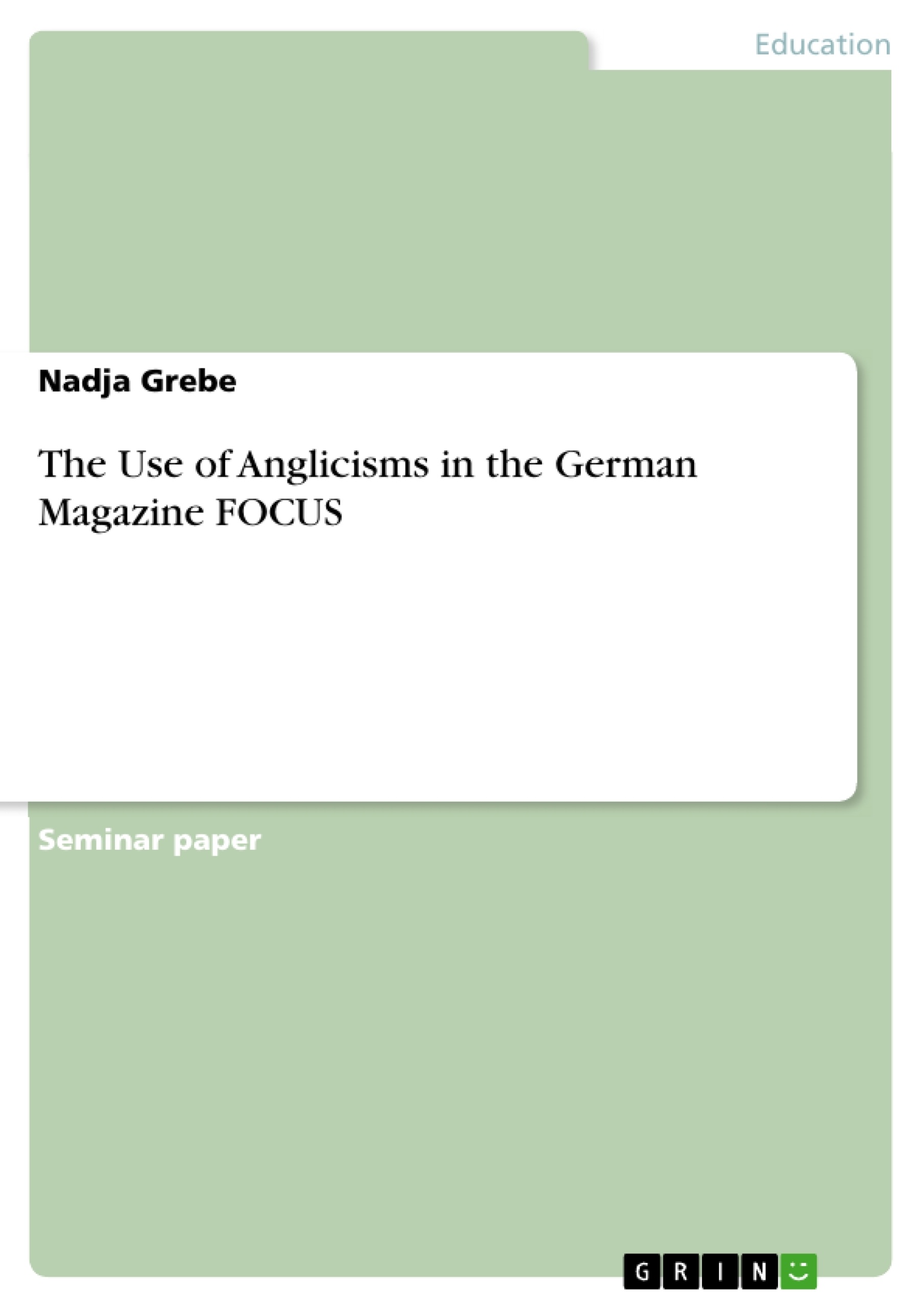Most of all linguists who find themselves engaged in Contact Linguistics agree upon the fact that the influence of the English language on German is constantly increasing and has especially risen during the last decades of the 20th century. (cf. Viereck 1980: 11; Götzeler 2008: 58-59) Due to the close collaboration in the political and economical sector, the contact between the two language regions has become more intense and has thus led to a higher frequency of borrowings from English. As a direct consequence of this process, a public discussion on the drawbacks of the use of anglicisms in German has started and found his peek in the foundation of the Verein Deutsche Sprache formerly called the Verein zur Rettung der deutschen Sprache in 1997. (cf. Götzeler 2008: 61)
The increasing presence of loanwords, as commonly believed, as well as the ongoing public discussion on their use is reason enough to analyze the use of anglicisms in the German language by using the example of the German newsmagazine FOCUS. In this context it shall be examined, whether the frequency of anglicisms in 2009 is higher than the frequency in 1993. Furthermore, as the corpus consists of texts from two different categories, namely Deutschland and Modernes Leben, numerical differences concerning those sections is also subject of the study. As a result, proof for the following theses is expected:
1. The frequency of anglicisms used in 2009 is higher than in 1993.
2. The number of borrowings in the section Modernes Leben will be greater than in the section Deutschland.
Inhaltsverzeichnis (Table of Contents)
- Introduction
- English Influence on German
- Research
- Corpus
- Method
- Definition of Anglicisms
- Evaluation
- Quantitative Analysis
- Frequency According to Year
- Frequency According to Subject Area
- Attempts at an Explanation
- Quantitative Analysis
- Conclusion
Zielsetzung und Themenschwerpunkte (Objectives and Key Themes)
This paper aims to analyze the use of anglicisms in the German language, specifically within the German newsmagazine FOCUS, by examining the frequency of anglicisms in 2009 compared to 1993. The study also investigates the differences in the number of anglicisms used in two different categories of texts, namely Deutschland and Modernes Leben. The paper aims to prove the following theses: the frequency of anglicisms used in 2009 is higher than in 1993, and the number of borrowings in the section Modernes Leben will be greater than in the section Deutschland.
- The influence of the English language on German
- The frequency of anglicisms in German newsmagazine FOCUS
- The evolution of anglicisms over time
- The use of anglicisms in different subject areas
- The impact of English on German language and culture
Zusammenfassung der Kapitel (Chapter Summaries)
The introduction discusses the growing influence of English on German and highlights the public discussion on the use of anglicisms. This paper aims to analyze the use of anglicisms in the German newsmagazine FOCUS, comparing the frequency of anglicisms in 2009 and 1993. The second chapter explores the concept of language contact and linguistic borrowing, emphasizing the historical and contemporary impact of English on German. The third chapter presents the corpus and methodology used for the research, defining the term anglicism for this study. The chapter focuses on providing a framework for the quantitative analysis that follows.
Schlüsselwörter (Keywords)
This paper primarily focuses on the analysis of anglicisms in the German newsmagazine FOCUS. It explores key themes such as language contact, linguistic borrowing, the influence of English on German, and the frequency and evolution of anglicisms in the German language. It uses empirical data and quantitative analysis to examine the use of anglicisms in different subject areas within the magazine. The paper also touches upon the impact of English on German language and culture.
- Quote paper
- Nadja Grebe (Author), 2010, The Use of Anglicisms in the German Magazine FOCUS, Munich, GRIN Verlag, https://www.grin.com/document/161067



